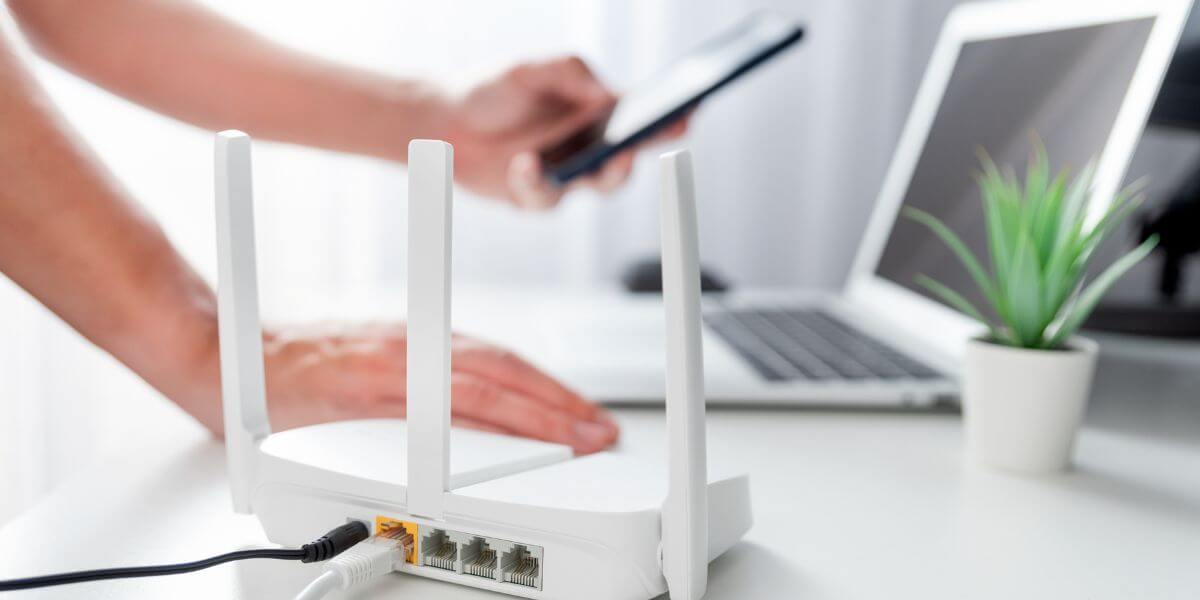Lower your internet bill
61% of people overpay for their internet.
Are you one of them?
Unlock exclusive offers in your area!
Call now
[tel]Enter zip code
1 Star is Poor & 5 Stars is Excellent.
* Required
Written by Sam Watanuki - Pub. Apr 23, 2025 / Updated Apr 22, 2025
Table of Contents
Are you happy with your Internet service?
About the author
The number of devices competing for bandwidth in our homes has grown exponentially. From smart TVs and gaming consoles to laptops and smartphones, every device demands its share of your internet connection.
When multiple devices are active simultaneously, you might notice sluggish performance, buffering videos, or laggy online games. Before upgrading to a more expensive internet plan, consider optimizing your current connection with Quality of Service (QoS) settings.
QoS (Quality of Service) settings are router features that allow you to prioritize certain devices, applications, or services on your network [1]. This technology controls how your router allocates bandwidth, ensuring critical devices and applications receive the resources they need for optimal performance. Instead of all devices competing equally for bandwidth, QoS settings create a hierarchy that determines which connections take priority.
For example, if someone is downloading large files while you’re trying to attend a video conference, QoS settings can ensure your video call gets priority bandwidth, preventing interruptions despite the concurrent download happening in the background.

Why care about QoS?
Implementing QoS settings on your home network offers several significant benefits:
QoS becomes particularly valuable in households with multiple users and devices competing for limited bandwidth. If you’ve ever experienced video calls freezing while someone else streams HD content, or if your online gaming suffers when large downloads are in progress, QoS settings can help resolve these conflicts.
Most modern routers include QoS capabilities, though the implementation varies between manufacturers. Generally, QoS functions in one of two ways:
Some advanced routers also feature automatic QoS, which identifies and prioritizes time-sensitive traffic like video calls and gaming without manual configuration [2].
The process for setting up QoS varies by router manufacturer. Here’s how to configure QoS on some popular router brands:
Note that Google Nest Wi-Fi only allows prioritization of one device at a time.

Get the most out of your QoS
To get the most from your QoS implementation:
While QoS settings can significantly improve your network performance, consider these additional strategies:

Make QoS work for you
QoS settings offer a powerful way to optimize your home network without costly internet plan upgrades. By prioritizing important devices and applications, you can ensure smooth performance even during peak usage times. Whether you’re working from home, streaming entertainment, or gaming online, proper QoS configuration helps everyone in your household enjoy a better internet experience.
Keep in mind that every router handles QoS a bit differently, so be sure to check your router’s manual for specific steps. With a little setup and some occasional tweaks, you can make the most of your internet connection and cut down on those annoying slowdowns and interruptions.
Most routers allow access through a web browser by entering your router’s IP address (commonly 192.168.0.1 or 192.168.1.1) and logging in with your credentials. Some newer routers may use a dedicated mobile app instead.
This depends on your specific needs. Device prioritization is simpler and works well when specific devices (like a work laptop) need consistent priority. Application prioritization provides more granular control but requires more setup.
No, QoS doesn’t reduce your total bandwidth. It simply manages how that bandwidth is distributed among devices and applications based on your priorities.
Yes, either set your gaming console as a high-priority device or prioritize gaming applications in your QoS settings. Some gaming-focused routers even have preset gaming profiles for optimal performance.
Even with fast internet, QoS can be beneficial during peak usage times when multiple devices are competing for bandwidth. However, the benefits become more noticeable on connections with limited bandwidth.
[1] Fortinet. “What Is QoS In Networking?"
[2] Netgear. “How QoS improves performance."
[3] TP-Link. “How to set up QoS using TP-Link Wi-Fi Router (new designed blue UI)."
[4] Netgear. “How to enable Quality of Service (QoS) on routers using the NETGEAR web interface?"
[5] Google Nest. “Prioritize a device on your Wi-Fi network."
About the author
Congratulations, you qualify for deals on internet plans.
Speak with our specialists to access all local discounts and limited time offers in your area.
[tel]61% of people overpay for their internet.
Are you one of them?
Unlock exclusive offers in your area!
Call now
[tel]Enter zip code